In 2022, seasonal rains and floods are severely impacting several parts of the world. Even as we start the last quarter of the year, 10 ten extreme flood events have occurred and have led to the loss of lives, damage to infrastructure and destruction of property. Here are the top 10 extreme global flood events reported by September 2022.
Pakistan-Worst Floods in a Decade: 33 million Affected, almost 1,000 Dead
On top of the list is Pakistan. According to the administration, the devastating flooding has already affected 33 million people in Pakistan and is still wreaking havoc on a large scale. Moreover, over the next few days, the situation is most likely to get worse. As a result, advisories were issued due to rising river levels in the Indus and Kabul.

The Pakistani government has declared an emergency to deal with monsoon flooding that it claims affected more than 30 million people. Some of the documented impacts in Pakistan included but are not limited to the following:
Worst Humanitarian Disaster This Decade Affects 33 million
Wide swaths of the nation are submerged, with terrible repercussions evoking the floods in Pakistan in 2010, where, at one point, a fifth of the nation’s whole land mass was submerged.
“The devastation seen is providing terrible flashbacks of the devastating megafloods in 2010, which devastated 20 million people,” said Peter Ophoff, Head of Delegation for the International Federation of Red Cross and Red Crescent Societies (IFRC) in Pakistan.
Senator Sherry Rehman, the Federal Minister for Climate Change in Pakistan, claims that the present flooding has already damaged 33 million people’s lives.
The minister declared that Pakistan was experiencing the largest humanitarian catastrophe of this decade, which has caused dramatic losses in terms of lives, property, and means of subsistence. “Huge portions of Pakistan have been submerged by the amount of water on the ground, affecting 33 million people, many of whom are stuck.”
Nearly 1,000 Deaths Have Been Reported
Since mid-June, 982 people, including 316 children, have perished in Pakistan due to monsoon rain and flooding. The number shows an increase of nearly 300 deaths over the previous week. There have been 692 reported fatalities as of August 20. In these extreme global flood events, 339 persons had died in Sindh Province as of August 27. In addition, Balochistan (234), Khyber Pakhtunkhwa (195), Punjab (167), Azad Jammu and Kashmir (37), Gilgit-Baltistan (9) and the Islamabad Capital Territory all recorded fatalities (1).
60+ Districts have been classified as “Calamity Hit”
The Pakistani government has formally designated 66 districts as “calamity hit”: 31 in Balochistan, 23 in Sindh, 9 in Khyber Pakhtunkhwa (KP), and 3 in Punjab.
The United Nations Office for the Coordination of Humanitarian Affairs (UNOCHA) reports that the situation is still dynamic and that many more districts have been affected. As long as it rains, more districts will likely be designated calamities.
“Destruction akin to an earthquake”
Floods, according to the Pakistan Red Crescent, “cause havoc akin to an earthquake.” Abrar ul Haq, the head of the Pakistan Red Crescent, said:
“Every day, the situation becomes worse. These heavy rains have severely constrained transport and mobility. Our emergency relief efforts are becoming increasingly difficult because of the COVID-19 danger and damage to infrastructure, connections, and vehicles. Being mostly immobile or marooned makes it difficult for us to reach most affected individuals.
Pakistan Red Crescent is offering relief aid in 23 of the hardest-hit districts. In order to support rescue and recovery efforts, we have also begun to enlist the aid of the International Committee of the Red Cross, affiliated National Societies, and national and international benefactors. Additionally, we have sent 500 more employees and volunteers to the flood-affected areas. However, we worry that the worst is yet to come because these types of waterways may put our people in danger of contracting water-borne illnesses.
Cycles of the Monster Monsoon
There has been a 200–800% divergence from the national average for August rainfall in some provinces. “Monster monsoon cycles,” according to Minister Rehman, were to blame for the exceptionally high rainfall levels.
“Pakistan is experiencing its eighth cycle of the monsoon when the nation typically only experiences three to four rain cycles. The prevalence of megafloods is shocking. According to the minister, Balochistan had 496% more rain than typical in August, while Sindh received 784% more than usual.
1,187 mm of rain had fallen in Padidan, a town in Sindh province, so far this month. The previous August monthly high was 300 mm, registered in 1992.
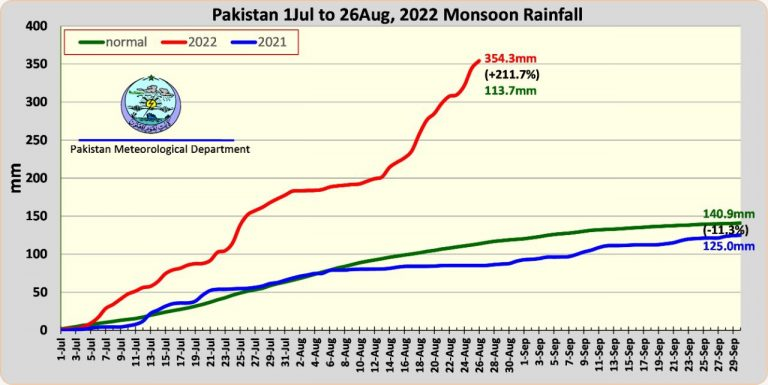
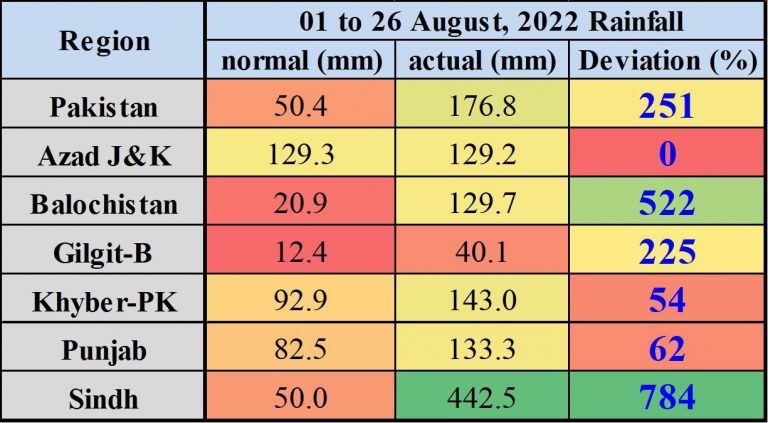
River Alerts
At Guddu (Sindh), Sukkur (Sindh), and Taunsa, the Indus was at a High Flood Level as of August 26 (the fourth of five reporting levels: Normal, Low Flood, Medium Flood, High Flood, Very High Flood) (Punjab).
According to the NDMA, the Kabul River was at a High Flood Level in Nowshera, Khyber Pakhtunkhwa, but over the following 48 hours, it was predicted to increase to Very High or above.
In the upcoming 24 to 48 hours, the Indus near Kalabagh and Chashma in Punjab Province is projected to reach a High to Very High Flood level.
DR Congo- Floods in Maniema Displace Thousands of People
Reports of extreme global flood events were also reported in Africa, the most vulnerable continent to climate change impacts. Storms and flooding in the eastern Democratic Republic of Congo (DR CongoManiema )’s Province in late January 2022 resulted in the eviction of over 13,000 people.
13,325 persons were reported as being homeless as a result of torrential rain, strong winds, and lightning strikes in Kindu and the surrounding areas on January 21, 2022, according to reports from the Caritas local office. In addition, 2,267 homes were impacted, 403 entirely demolished. Caritas claims that the flooding was made worse by obstructed and insufficient drainage systems and the construction of shoddy or improvised homes on flood plains.
No fatalities or injuries have been officially confirmed, however, according to Caritas, 6 persons have been reported missing, and 4 more have been struck by lightning.
Over the past few weeks, various parts of eastern DR Congo have seen heavy rain. For example, on January 9, 2022, residences in Salamabila, Maniema Province, were damaged by severe rain and flooding, according to Radio Okapi (the UN radio station in the Democratic Republic of the Congo), forcing 320 families to flee.
According to Radio Okapi, buildings in Masisi were reportedly damaged by strong rains around January 14. As a result, according to the report, schools were in jeopardy of failing.
More recently, on February 1, 2022, local media reported flooding and a lot of rain in Kalima, Maniema Province. People are now homeless as a result of building damage. In addition, since the bridge was destroyed, villages are now cut off.
Unconfirmed sources further claim that catastrophic flooding, brought on by heavy rains on February 1, damaged Kiliba in the Ruzizi River valley in South Kivu province and drove hundreds of residents out of their homes.
In August of last year, South Kivu saw severe flooding, which led to at least one death in the province’s capital city of Bukavu. During this time, severe weather has also affected Rwanda and Uganda, two nearby nations.
Italy-Severe Flooding in the Mache Region

The Marche Region of Italy saw terrible flooding on the night of September 15 to 16, 2022, which resulted in at least 7 fatalities.
The Province of Ancona region has been particularly seriously impacted. The communes of Sassoferrato, Arcevia, Serra de’ Conti, Senigallia, Barbara, and Pianello Vallesina reportedly suffered damage as a result of flash floods. Trecastelli and Ostra are two other areas that are impacted.
Affected towns in Pesaro-Urbino province include Serra Sant’Abbondio, Cagli, and Cantiano.
Many places lack access to water, telephone, and energy. There have been closures of several public services, including schools. A number of the local roads have been damaged, isolating some settlements.
Teams made up of 300 people, according to Italy’s fire department Vigili del Fuoco, saved dozens of people in the provinces of Pesaro-Urbino and Ancona. To avoid flooding, many people found shelter in trees and on the roofs of houses. More than 400 interventions, including chopper rescues, have been made. Vigili del Fuoco stated that as of early on September 16, 7 persons had passed away, and 3 were still missing. Some of the people who were saved were sent to the hospital for treatment of their wounds or for hypothermia.
Italian civil protection officials reported that 420 mm of rain poured in a matter of hours. Many rivers and streams have burst their banks, including the Misa river in Senigallia, which dramatically did so in 2014, and the Cesano river in Barbara, causing extreme global flood events.
The pain of what happened is great, but the Marchega community is resilient and will know how to respond, according to Francesco Acquaroli, president of the Marche Region. My sympathies and closeness are with the families of the missing individuals and the missing individuals themselves.
Alessandro Piccini, the mayor of Cantiano, posted on social media that “in a matter of minutes, the equivalent of the heavy downpour of rain that lasted for half a year rain poured. Dramatic climate change, not severe weather, is to blame. We become numb in the face of the power of nature, which is punishing us because we do not respect it as it should.
Authorities still do not have a complete picture of the magnitude of the damage because the scenario is still developing.
Watch a video of the floods in the Mache region.
India – Floods in Uttar Pradesh
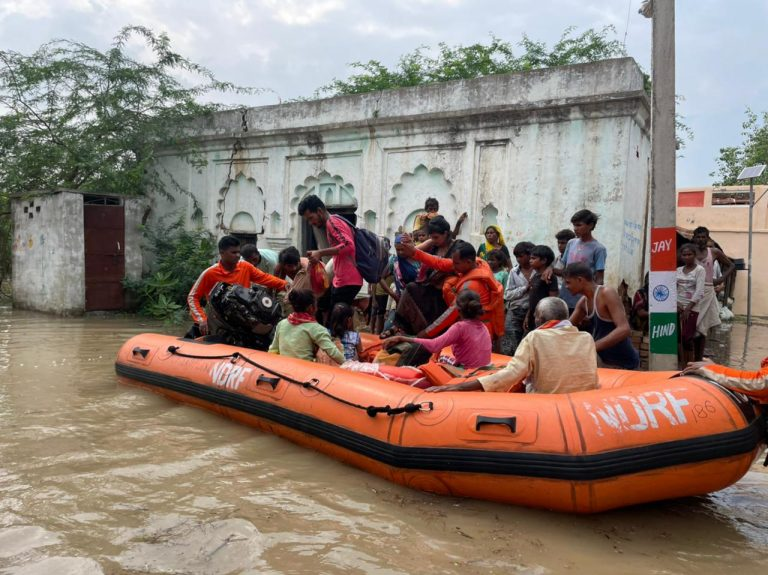
Over the past several days, 245,000 people have been affected by flooding in the Indian state of Uttar Pradesh. At least 5 places, including Varanasi, have Ganges levels that are above the danger threshold.
Since August 26, 2022, flooding has reportedly devastated over 1,000 villages across 22 districts in the state, according to India’s National Emergency Response Centre (NERC).
As of August 29, about 16,562 evacuees were staying in 386 relief camps that the authorities had established. According to NERC, 245,585 persons were affected as of August 31, 2022. Recently, the floods have claimed the lives of at least 4 persons.
Teams from the National Disaster Response Force, State Disaster Response Force, and Provincial Armed Constabulary have been sent for relief and rescue efforts.
Yogi Adityanath, the chief minister of Uttar Pradesh, visited flood victims in the districts of Varanasi and Gazipur on August 31, 2022. He also did an aerial reconnaissance of the afflicted areas.
Philippines -Typhoon Noru Floods
On September 26, 2022, Typhoon Noru’s heavy rains caused extensive flooding in a number of the Philippines’ northern regions. Five rescuers were reported dead in Bulacan Province, according to authorities.
When conducting rescue efforts in the San Miguel district, which is located about 70 km north of the capital Manila, five rescuers from the Bulacan Provincial Disaster Risk Reduction and Management Office (PDRRMO) perished after being washed away by flash floods. A second person went missing later that day in a different flooding episode that also occurred in San Miguel.
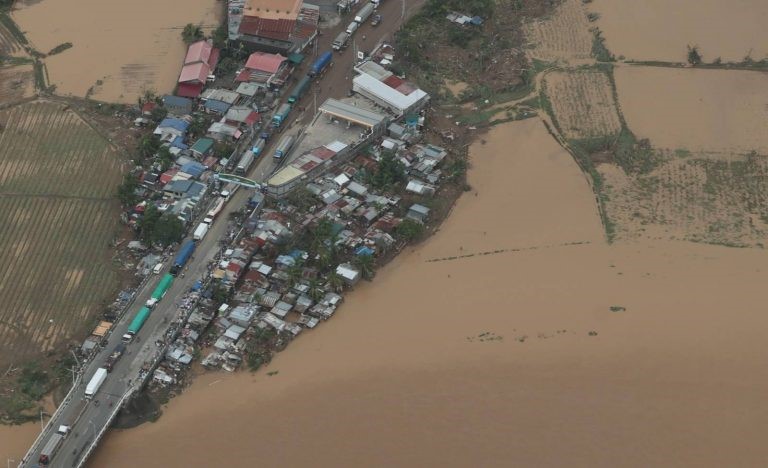
The strongest typhoon to strike the Philippines this year was Typhoon Noru, also known as Karding. On September 25, Noru touched down in northern Quezon Province. It subsequently travelled across central Luzon before heading west over the South China Sea toward Vietnam.
154 barangays in Region II – Cagayan Valley, Region III – Central Luzon, MIMAROPA, and Region V – Bicol Region were reportedly hit by the storm, according to disaster authorities. In addition, in 194 evacuation centres, 2,238 families (9,103 people) were temporarily housed as of September 26, according to the ASEAN Coordinating Centre for Humanitarian Assistance (AHA Centre) on disaster management, and an additional 594 persons had sought safety with friends or family.
Extreme global flood events in the northern region were caused by heavy rain in the northern regions. It was reported that about 283.3 mm of rain fell in 24 hours in the town of Subic in the province of Zambales until September 26. The municipality of Iba in the north recorded 142.3 mm of rainfall, and Ambulong in the Batangas province reported 123.2 mm.
In Camarines Sur Province, Bicol Region, roads were ruled impassable, isolating several areas. Army personnel rescued and evacuated several areas of the Central Luzon provinces of Zambales and Quezon. In addition, the provinces of Aurora and Nueva Ecija were left without electricity for thousands of people.
On September 26, Philippine President Ferdinand Marcos Jr. undertook an aerial assessment of the damage.
Noru will proceed towards Vietnam before perhaps passing over Laos and Thailand. AHA Centre warned that 4.1 million people might be on the path of the storm.
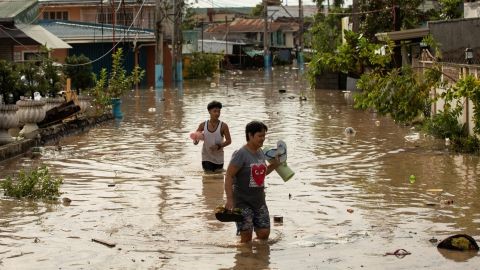
Madagascar- Batsirai’s tropical cyclone has now claimed 121 lives
Since Tropical Cyclone Batsirai swept through the nation on February 5, 2022, as many as 121 persons perished in Madagascar.
On February 5, 2022, Batsirai, a category 3 storm, made landfall nearby Mananjary, causing one of the extreme global flood events. Catastrophic damage was inflicted by sustained winds of 165 km/h and gusts as high as 230 km/h. Around Mananjary City, where homes were destroyed, and buildings’ roofs were ripped off, the wind damage was terrible.
Some places remained unreachable for days after the storm due to infrastructure, roads, and bridge damage. Since then, local authorities have conducted more thorough damage assessments, providing a clearer picture of the disaster’s breadth. The intense winds were mostly responsible for the early devastation. Major flooding is also visible in recent damage assessments and satellite photographs, particularly in the Haute Matsiatra, Vatovavy, and Fitovinany Regions.
According to a report released on February 13 by the nation’s disaster management organization, Bureau National de Gestion des Risques et des Catastrophes (BNGRC), as many as 143,718 people from 30,123 households have been impacted throughout the 15 regions of Alaotra-Mangoro, Amoron’i Mania, Analanjirofo, Anosy, Atsimo-Andrefana, Atsimo-Atsinanana 8,882 homes were destroyed, and the storm damaged 4,654. In addition, 7,098 additional homes were reported to have flooded. Furthermore, 69,000 people were residing in shelters at one time due to displacement. Since then, it has decreased to 27,048. In addition to roads, water and power infrastructure, schools, and public and governmental buildings, the storm also caused damage.
The majority of the dwellings are made of dirt. When there are floods, the houses turn into mud and collapse, according to Ikongo district deputy Jean-Brunelle Razafintsiandraofa, who spoke to Associated Press. They gave way under humans and became tombs for those asleep.
The district deputy further explained that many victims had lost all their possessions and had no access to food, storage, or shelter in a message posted on social media. The region was totally cut off until recently.

UK- Following The Flooding Caused By Storm Franklin, Hundreds of Homes were Damaged
One of the most devastating global flood events was due to Storm Franklin’s significant rainfall and the resulting river surge on February 20, 2022, hundreds of homes in England and Wales experienced extreme global flood events. However, despite record river levels, authorities claim flood defences have shielded more than 40,000 buildings.
According to the Environment Agency, the worst flooding in England occurred along the River Ouse in Yorkshire and the River Severn in the West Midlands, where Ironbridge in Shropshire and Bewdley in Worcestershire both had severe flood warnings (the highest level). While roads have been shut down and rail services have been suspended, some inhabitants have evacuated their homes.
The Severn reached 6.55 meters late on February 22, according to the Buildwas measurement station, but it has since decreased significantly. 7.04 meters set a record high here in November 2000.
On February 23, the River Severn near Bewdley measured 5.33 meters, and a modest rise was predicted for the afternoon. However, 5.56 meters, which was also measured in November 2000, is the record high.
On February 20, the River Mersey in Greater Manchester hit a record high of 4.4 meters, breaking the previous mark of 3.97 meters established on November 6, 2000.
The Environment Agency’s flood duty manager, Katharine Smith, stated, “Up to this point, we have received reports of about 400 properties flooding over the past several days. We think of everyone impacted because floods often terribly affect people’s lives.
Teams are working on the ground to take preventative measures, including lowering flood gates, setting up temporary barriers, and transporting pumps and other response equipment to the most vulnerable places. Due to expected extreme global flood events in the region, Environment Agency defences have shielded more than 40,000 properties despite record river levels.
High levels of the River Severn in Powys were reported by Natural Resources Wales (NRW) in Wales. In the late evening of February 20, residents of Llandinam near Newtown evacuated their homes due to flooding.
Following Storm Dudley and Storm Eunice, which both claimed three lives and left 1.4 million homes without power, Franklin is the third named storm to land in the UK in a week.
Franklin also contributed to some coastal and flash floods in certain areas of France, Belgium, and the Netherlands. On February 20, 2022, two persons perished after carrying their car away by large waves at Briqueville-sur-Mer, northern France.
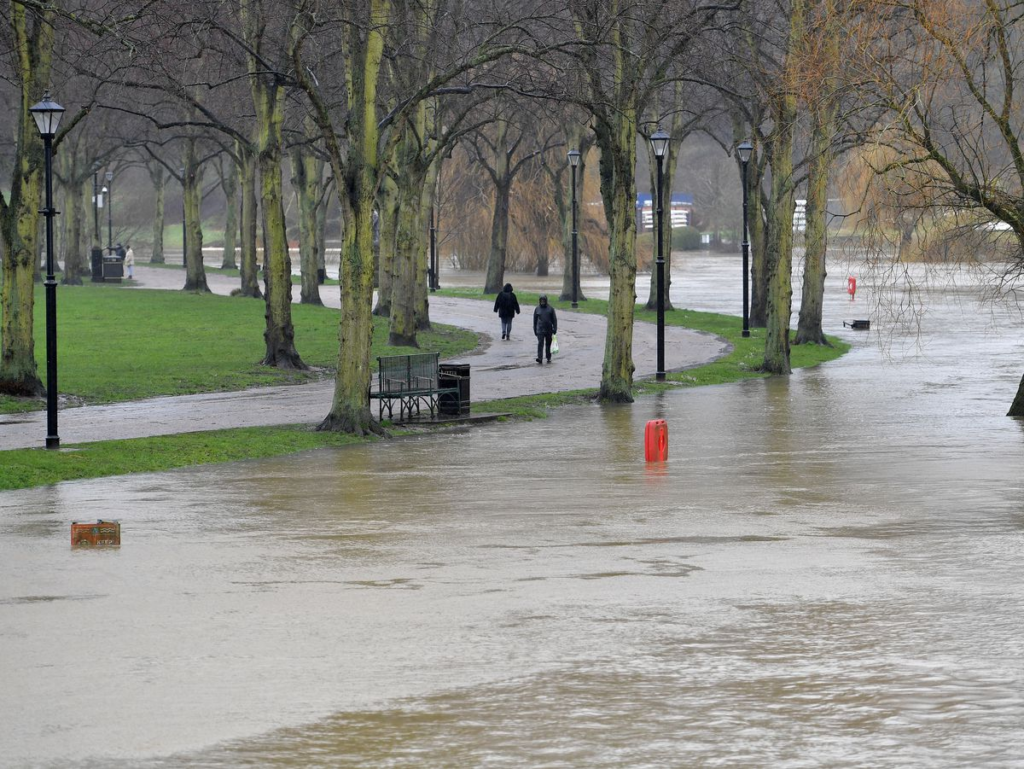
Australia- Floods in New South Wales become Fatal
Since September 22, 2022, there has been a lot of rain in Australia’s New South Wales (NSW), which has caused flooding in numerous areas of the state. Over 40 high water rescues were carried out by State Emergency Services (NSW SES). In the Central West Region, flood waters claimed one person’s life, according to NSW Police.
The body of a little kid was discovered in a car that had been carried away by floodwaters at the Genaren Creek in Tullamore, close to Parkes, in the state’s Central West, according to NSW Police on September 24.
Four people inside the car managed to flee and hang onto trees until they were rescued and sent to the hospital. Sadly, the five-year-old youngster was stranded inside the vehicle before it sank. The passengers of a second vehicle that was later swept away by floods in the same area managed to escape safely.
NSW SES reported that beginning on September 22, regions of the state were affected by heavy rain brought on by a slow-moving low-pressure system. Data from Australia’s Bureau of Meteorology (BoM) shows that 370 mm of rain fell at Meldrum weather station in the 48 hours leading up to September 23. Lowant near Coffs Harbour recorded 186 mm, while Wooli Beach near Grafton saw 149.8 mm in the twenty-four hours leading up to September 23, 2022.
The NSW SES, according to NSW State Emergency Service Commissioner Carlene York, had been extremely active across the state’s western and southern regions since September 22.
Numerous more towns and river systems were flooded. As a result, the Bureau handled 543 calls seeking assistance, with 49 flood rescues. Although it ws reported that individuals were becoming trapped in their cars, the number of water rescues is increasing. Therefore, we want to advise everyone once more to keep an eye on the road conditions and, if necessary, take a safe detour if you encounter roads impacted by flooding.
As of September 22, flooding had been reported in a number of sites throughout the state, notably along the Narran River, the Namoi River in Gunnedah, and the Macquarie River in Warren, Wellington, and Narromine.
The Namoi River caused substantial flooding, as seen in a number of images from the NSW SES-tasked reconnaissance helicopter trip around Gunnedah on September 24. The Namoi River peaked at 8.24 meters early on September 24, according to BoM. However, it is anticipated to stay above or close to the major flood level over the weekend in Gunnedah.
This is the first of many flood incidents that New South Wales expects in the near future. The NSW SES stated that it is “getting ready for busy months after the third La Nina was proclaimed. We’re busy recruiting more volunteers, relocating cars and boats into flood-prone areas, and getting our tools and units ready to respond.”
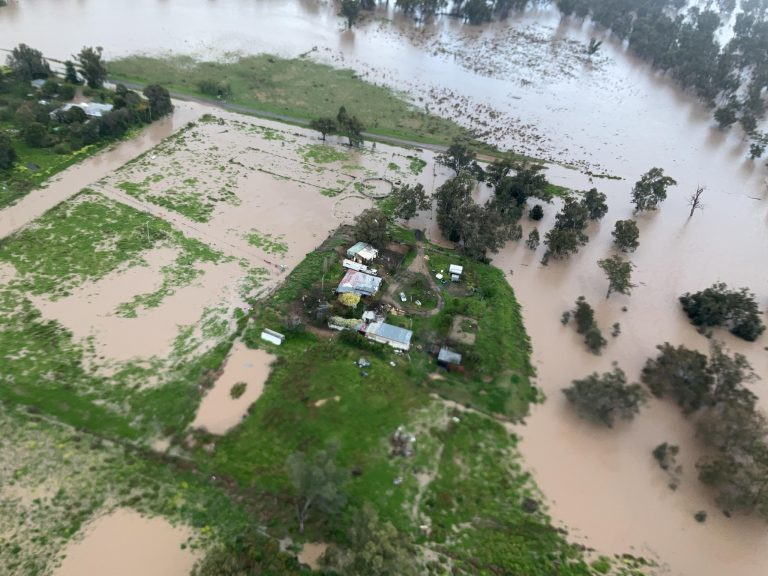
Flooding in Gunnedah, New South Wales, Australia, September 2022. Photo: NSW SES
USA- Florida Experiences Catastrophic Storm Surge Floods Due to Hurricane Ian
On September 28, 2022, Hurricane Ian made landfall in southwest Florida, USA, leaving a path of devastation in its wake.
Florida Governor Ron DeSantis declared in a statement on September 28 that Hurricane Ian made landfall in Cayo Costa with gusts of 155 mph (250 km/h), just falling short of a Category 5 hurricane.
There have been reports of severe flooding and damage in several parts of the state, like a tornado. As a result, Florida ordered a national assessment of flood vulnerabilities, and the governor advised Floridians to remain indoors and pay attention to local weather advisories.
Powerful winds, strong waves, and storm surges produced catastrophic damage throughout Florida’s southwest Gulf Coast. “Severe and life-threatening storm surge flooding of 8 to 10 feet (2.4 to 3 meters) above ground level accompanied with destructive waves are ongoing over the southwest Florida coastline from Englewood to Bonita Beach, including Charlotte Harbor,” the National Hurricane Center reported.
At least 20 people are still missing after a migrant boat sank off the coast of Florida due to rough seas.
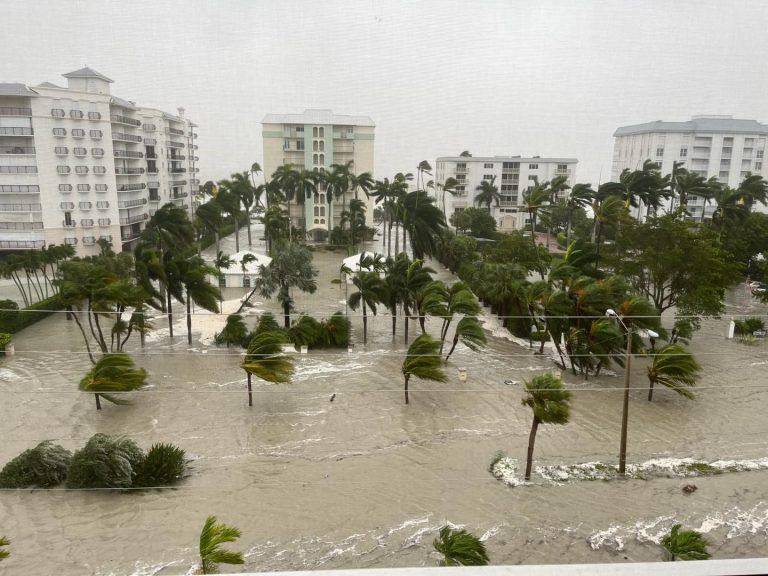
Initial estimates from Florida indicate that thousands of buildings may have flooded in Fort Myers, Naples, and Port Charlotte, among other places. Videos and pictures posted on social media showed floating in choppy waters, smashed automobiles, boats, and structures torn from their foundations. In addition, wind and flooding in Port Charlotte have badly destroyed a hospital.
Before Hurricane Ian hit, many individuals left their houses, while others stayed home or went to take shelter in the authorities, including roughly 3,800 people in Lee County. As a result, curfews were imposed in places like Fort Myers and Naples.
Roger Desjarlais, manager of Lee County, indicated that the county recognized the frightening scenario of the hurricane. However, people were urged not to panic but to look for safe shelters as guided by the community advisers.
Extreme global flood events caused hurricane damage, and more than two million homes were left without electricity. Water infrastructure has also been harmed, and some places, including Fort Myers, have issued boil water advisories.
All 67 counties in Florida were given a Major Disaster Declaration by the state’s governor, who also “asked the federal government for 100% reimbursement up front for 60 days to ensure we can move fast forward into response and recovery.” Usually, this request is not made until after the storm, when catastrophe assessments have been done. In recent years, extreme global flood events have dominated most coastal counties in the United States as evidence of climate change impacts.

Due to increasing flood reports and extreme impacts worldwide, flood risk maps can help identify vulnerable regions at risk of flooding for early warning and mitigation of potential disasters.
1 Reply to “Extreme Global Flood Events in 2022- Top 10 List”
Comments are closed.